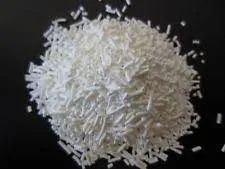
potassium sorbate price
The Price Dynamics of Potassium Sorbate An Overview
Potassium sorbate, a widely used preservative in the food and beverage industry, has gained significant attention over the past few decades due to its effectiveness in prolonging shelf life and preventing microbial growth. As a potassium salt of sorbic acid, it possesses several advantageous qualities, including its solubility in both water and alcohol, making it an ideal choice for various applications. This article will delve into the factors influencing the price dynamics of potassium sorbate, recent trends, and its implications for manufacturers and consumers alike.
Understanding Potassium Sorbate
Potassium sorbate (C6H7KO2) is primarily utilized in the food industry to inhibit the growth of mold, yeast, and some bacteria. It is frequently found in products such as baked goods, cheeses, beverages, and dried fruits. Its ability to function as a preservative at relatively low concentrations, typically around 0.1% to 0.2%, makes it a cost-effective solution for extending the shelf life of perishable items. Moreover, potassium sorbate is recognized as safe for consumption, earning approval from esteemed health organizations such as the FDA and the European Food Safety Authority (EFSA).
Factors Influencing the Price of Potassium Sorbate
1. Raw Material Availability The production of potassium sorbate relies on sufficient supplies of raw materials, specifically sorbic acid and potassium hydroxide or potassium carbonate. Fluctuations in the availability of these materials directly influence the production costs of potassium sorbate. In recent years, disruptions in the supply chain, often caused by geopolitical events and natural disasters, have led to price volatility.
2. Market Demand The demand for potassium sorbate has surged due to the rising awareness of food safety and the increasing consumption of processed foods. As more manufacturers opt for natural preservatives over artificial alternatives, the demand for potassium sorbate continues to grow. Seasonal trends, such as increased demand during holiday seasons or for specific food products, can also create spikes in price.
3. Regulatory Factors Regulatory changes can have a significant impact on the price of potassium sorbate. If new regulations create stricter standards for food preservatives, manufacturers may face increased production costs that can lead to higher retail prices. Conversely, if regulatory bodies lighten restrictions, prices may stabilize or decrease.
potassium sorbate price

4. Global Economic Conditions The global economy plays a crucial role in commodity pricing. Economic downturns can lead to reduced spending in the food industry, thereby decreasing demand for preservatives like potassium sorbate and causing prices to drop. On the other hand, economic growth can stimulate demand, pushing prices higher.
5. Competition Among Producers The potassium sorbate market is characterized by a mix of established companies and new entrants. Increased competition can drive prices down as manufacturers strive to attract customers through aggressive pricing strategies. However, mergers and acquisitions among producers can sometimes lead to reduced competition and, consequently, higher prices.
Recent Trends and Future Outlook
In recent years, the price of potassium sorbate has experienced fluctuations in response to the aforementioned factors. For instance, the COVID-19 pandemic disrupted supply chains and increased production costs, leading to a temporary rise in prices. However, as the market stabilizes and production ramps up, prices are expected to moderate.
Looking ahead, the trend of consumers seeking cleaner labels and natural ingredients is likely to sustain demand for potassium sorbate. Manufacturers who embrace sustainability and transparency may find competitive advantages that position them favorably in the market. Additionally, advancements in production technology could enhance efficiency and reduce costs, potentially leading to lower prices for consumers.
Conclusion
The price of potassium sorbate is influenced by a multitude of factors ranging from raw material availability to global economic conditions. As a crucial ingredient in food preservation, its pricing dynamics will continue to be of significant interest to both manufacturers and consumers. Staying informed about market trends and external influences will be essential for navigating the complexities of the potassium sorbate market and making informed decisions in this ever-evolving landscape. Whether one is a manufacturer, a retailer, or a consumer, understanding the factors that drive pricing can lead to better strategies and outcomes in the world of food preservation.
-
Understanding Synthetic Rubber OptionsNewsApr.27,2025
-
Trichloroisocyanuric Acid: Essential for Clean and Safe WaterNewsApr.27,2025
-
Sodium Dichloroisocyanurate: Key to Safe Water TreatmentNewsApr.27,2025
-
Sodium Acid Pyrophosphate: Essential in Modern Food ProcessingNewsApr.27,2025
-
Essential Water Treatment ChemicalsNewsApr.27,2025
-
Denatured Alcohol and Its Industrial UsesNewsApr.27,2025
-
The Versatile Uses of Sodium BicarbonateNewsApr.24,2025
Hebei Tenger Chemical Technology Co., Ltd. focuses on the chemical industry and is committed to the export service of chemical raw materials.
-

view more DiethanolisopropanolamineIn the ever-growing field of chemical solutions, diethanolisopropanolamine (DEIPA) stands out as a versatile and important compound. Due to its unique chemical structure and properties, DEIPA is of interest to various industries including construction, personal care, and agriculture. -

view more TriisopropanolamineTriisopropanolamine (TIPA) alkanol amine substance, is a kind of alcohol amine compound with amino and alcohol hydroxyl, and because of its molecules contains both amino and hydroxyl. -

view more Tetramethyl Thiuram DisulfideTetramethyl thiuram disulfide, also known as TMTD, is a white to light-yellow powder with a distinct sulfur-like odor. It is soluble in organic solvents such as benzene, acetone, and ethyl acetate, making it highly versatile for use in different formulations. TMTD is known for its excellent vulcanization acceleration properties, which makes it a key ingredient in the production of rubber products. Additionally, it acts as an effective fungicide and bactericide, making it valuable in agricultural applications. Its high purity and stability ensure consistent performance, making it a preferred choice for manufacturers across various industries.











